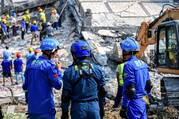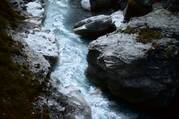Loading...
Click here if you don’t see subscription options
Click here if you don’t see subscription options

FaithNews
“If (President Donald) Trump’s wishes come true, it could happen in the future that pastoral care in Greenland would be offered from some American diocese, which would mean I would lose my dream job here,” Father Tomaž Majcen said.

Politics & SocietyDispatches
“Hospitals are overwhelmed, and people are sleeping out on the streets, anywhere they can, in fields and playgrounds and religious compounds.”

Arts & CultureCatholic Book Club
Sports hasn't always been the most popular topic among America's editors and contributors—unless it was the Grand Old Game, baseball.

Politics & SocietyNews
A joint Catholic-Evangelical report found that an overwhelming majority of people impacted by the Trump administration's mass deportations are Christian.

Arts & Culture
Books
May 01, 2025 issueIn 'Cosmic Connections,' Charles Taylor focuses on how art, and poetry in particular, both expresses and responds to the unique human experience of “being modern.”

FaithNews
The altercation capped a month-long saga surrounding the Satanic group’s “black mass,” which founder Michael Stewart had sought to perform in the Capitol so that “God will fall and Kansas will be embraced by the black flame of Lucifer.”

Politics & SocietyShort Take
As people of faith, we must defend migrants and refugees at a time when the state is increasingly moving to dehumanize them.

FaithNews
Francis' willingness to be seen in all his infirmity serves as an example to young and old alike that fragility is part of the human condition—and should be embraced.

FaithNews
Laura Sgro, lawyer of five alleged victims of Father Rupnik, said she and the women she represents welcomed the news “with joy in our hearts,” and expressed “heartfelt thanks” to Bishop Micas.

FaithScripture Reflections
A Reflection for Tuesday of the Fourth Week of Lent, by Valerie Schultz
